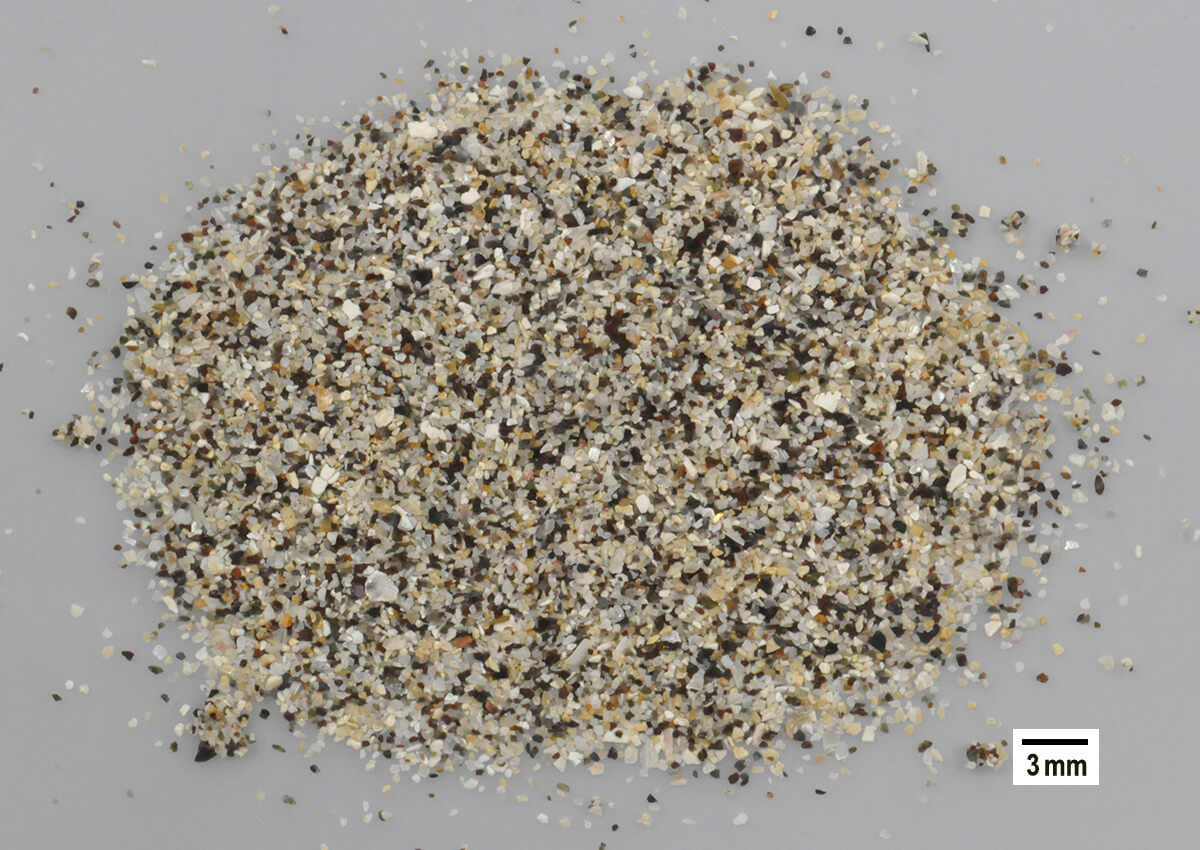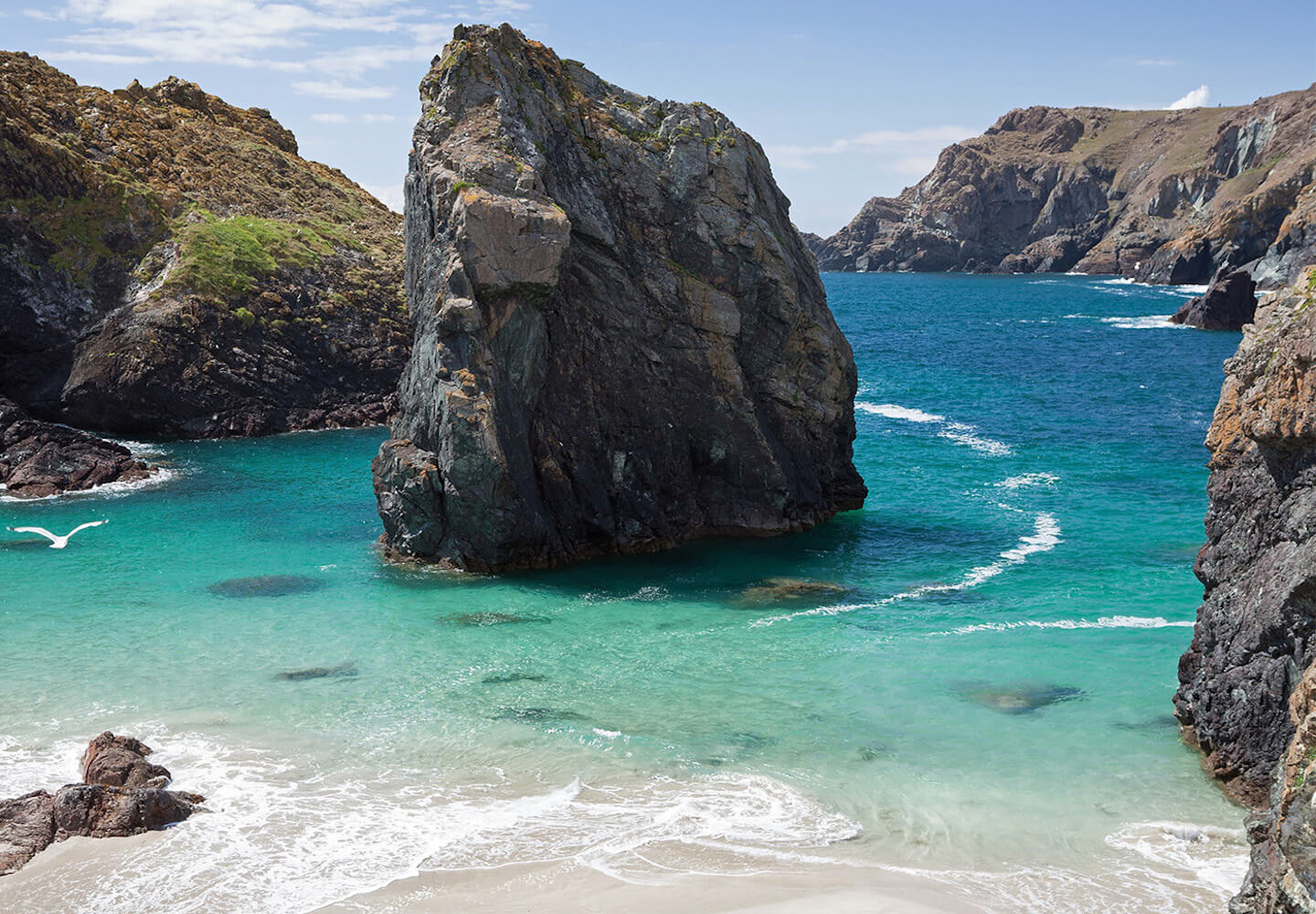
Known for its striking beauty, unique geomorphology, and picturesque coves, the Lizard Peninsula is legendary for its 18th century smuggling trade and shipwrecks in nearby reefs. This area, known as Land’s End, the furthest southwest corner of England’s granite moorlands, boasts of a stunning coastline, white and golden sand and turquoise waters. Kynance Cove is owned and operated by the National Trust.


Dark metamorphic sand grains are present along with white and off-white marine shell fragment sand grains. The greenish sand grains are serpentinite, a metamorphic rock formed at tectonic plate boundaries deep within the earth’s crust. Occasional refractile silica sand grains are also present.
Geographic Overview
The Lizard peninsula was pushed up from under the ocean 300 million years ago by advancing tectonic obduction so that part of the earth’s mantle known as serpentinite (peridotite) is seen at Lizard point. This unique geology has swaths of metamorphic serpentine rock with some 500-million-year-old Man of War gneiss off Lizard Point.
Sand Gallery

This mixture of sharply angled sand grains consists of dark metamorphic rock, white and off-white shell fragments and occasional clear to translucent quartz grains. Many of the sand grains are only a fraction of a millimeter in size.

This high magnification shows details of the dark and reddish metamorphic rock grains and the white and translucent larger fragments that are shell fragments. The dark metamorphic sand grains have relatively sharp angles while many of the white softer marine shell sand grains have somewhat smoother and rounded edges likely worn down by wave action.

This high magnification is showing a mixture of translucent and light colored marine sand grains and dark reddish to black geological sand grains that are primarily fragments of metamorphic rock.






